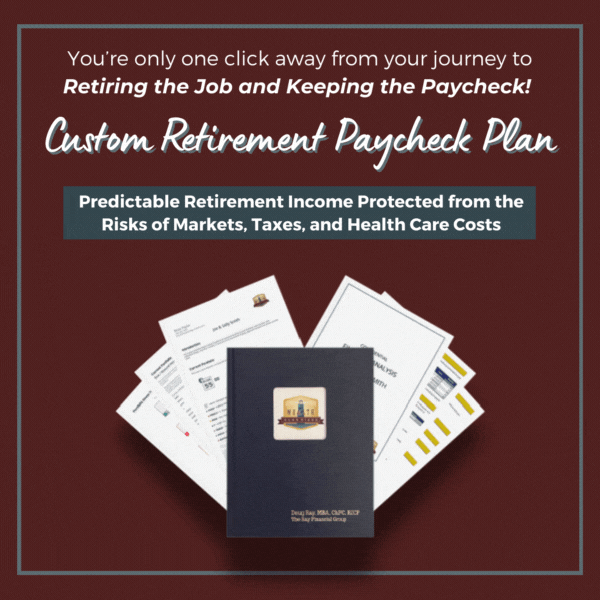 Where were you in 1986? It was 36 years ago, but it seems like yesterday, right?
Where were you in 1986? It was 36 years ago, but it seems like yesterday, right?
Back then, the average price fora new car was $9,255.1 Today, a new set of wheels is going to cost you, on average, around $33,000! The average home in the mid ’80s was $90,000. According to the latest Census report, today it’s more than$300,000. A gallon of gas in ’86 was 93 cents. But recently we’ve seen it as high as $4. These price differences are staggering and the definition of inflation. And the biggest impact inflation has on your retirement is on your purchasing power.
Here’s some eye-opening statistics for you: At a conservative inflation rate of 2.5%, your dollar today will be worth about 78 cents in 10 years. That same dollar will be worth only 61 cents in 20 years, and only 48 cents in 30 years. Think about how that could impact your lifestyle in retirement.
One of the greatest increases we’ve seen is in the cost of healthcare, something retirees must prepare for. Did you know that a couple retiring at age 65 will need an average $260,000 above what Medicare pays to meet health care costs?2
As you look toward retirement, everything will likely cost more, from basic needs, such as medical expenses and food, to enjoyment of a social lifestyle. How can you help prepare for the inevitable?
It all starts with a sound retirement income plan.

Inflation can be dangerous especially for those on fixed incomes. Let’s say your fixed income in retirement is $50,000, and that seems to be enough because your yearly expenses are less than that. Let’s say your income need is $40,000, providing a $10,000 surplus.
Here’s the challange: Although your income is fixed, expenses are not and will continue to rise because of inflation. Eventually your $40,000 in annual expenses could grow to$60,000, which would clearly be a problem if your income is fixed at $50,000!
One thing you can do to help reduce the impact of inflation is to include an inflation assumption in your calculations of how much annual income you’ll need. Another important step is maintaining an investment portfolio that can potentially provide returns above the inflation rate.
A solid retirement plan should budget for two types of expenses: fixed/essential and social. Fixed expenses include rent/mortgage, food, medical expenses, phone, utilities, insurance, and other costs that will always be there. These fixed expenses are likely to increase over time, which is why your Social Security benefits provide an annual cost-of-living adjustment.
Social expenses include travel, entertainment, hobbies, and other activities that we all hope to enjoy for as long as we live. However, it’s likely that the ability and desire to participate in these activities may decline with age. You’ll want to take the time to budget these things while you can still enjoy them.
During my years as a financial professional, I’ve seen a wide variety of retirement approaches and outcomes. I have seen clients who plan for all their retirement needs, and just needed someone to keep an eye on things. More frequently, I see people who thought they had planned for inflation and unknowns, yet still run out of purchasing power as the years pass.
On the other end of the spectrum, I have also seen retirees who plan well and are very frugal. In their advanced years, they find that they have more money than they can spend — having overlooked the opportunity to enjoy those funds while they were still young and healthy enough.
Of course, no one can predict exactly what inflation will do. But it’s a safe bet it won’t disappear — and even a mild inflation rate, over time, can erode your purchasing power and even set back your retirement lifestyle.
Planning ahead and understanding risks is critical, and major concern for today’s retirees. And that’s where The Wealth Guardians can help. Let us show you in black and white a custom retirement income plan that is comprehensive, individualized and based on strategies that balance growth with downside protection. Our planning factors inflation and can adjust the rate as needed.
Our Custom Retirement Paycheck Plan shows how to protect your retirement from the risks of unexpected market swings, tax changes, and health care expenses using a mathematically tested strategy to create lifetime income allowing you to stop worrying about outliving your money and get on with enjoying the rest of your life.
Let us show you in black and white a custom retirement income plan that is comprehensive, individualized and based on strategies that balance growth with downside protection. Get your Custom Retirement Paycheck Plan now!
Give us a call at our Charlotte office at (704) 248-8549, or our Clemmons office at (336) 391-3409. Or, click here to request a no-cost, no-obligation meeting.
[SOURCES & ADDITIONAL DISCLOSURES]
Copyright © 2021 The Kiplinger Washington Editors. All rights reserved. Distributed by Financial Media Exchange.
- https://noln.net/2016/05/31/three-decades-apart-1986-then-vs-now/
- https://www.marketwatch.com/story/you-might-need-nearly-350000-to-pay-for-health-care-costs-in-retirement-2017-02-02
- https://thehill.com/blogs/congress-blog/economy-budget/258557-cpi-for-elderly-is-most-accurate-measure-for-calculating







